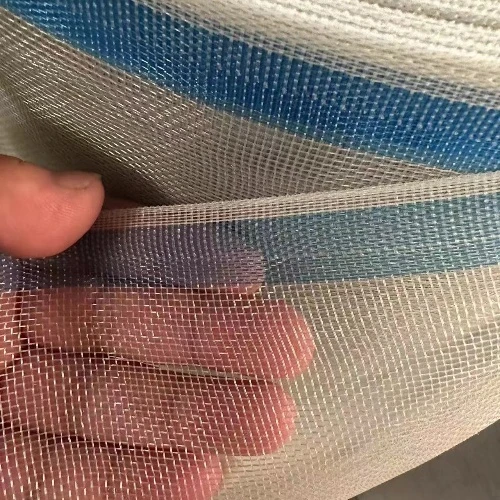-
 Afrikaans
Afrikaans -
 Albanian
Albanian -
 Amharic
Amharic -
 Arabic
Arabic -
 Armenian
Armenian -
 Azerbaijani
Azerbaijani -
 Basque
Basque -
 Belarusian
Belarusian -
 Bengali
Bengali -
 Bosnian
Bosnian -
 Bulgarian
Bulgarian -
 Catalan
Catalan -
 Cebuano
Cebuano -
 China
China -
 Corsican
Corsican -
 Croatian
Croatian -
 Czech
Czech -
 Danish
Danish -
 Dutch
Dutch -
 English
English -
 Esperanto
Esperanto -
 Estonian
Estonian -
 Finnish
Finnish -
 French
French -
 Frisian
Frisian -
 Galician
Galician -
 Georgian
Georgian -
 German
German -
 Greek
Greek -
 Gujarati
Gujarati -
 Haitian Creole
Haitian Creole -
 hausa
hausa -
 hawaiian
hawaiian -
 Hebrew
Hebrew -
 Hindi
Hindi -
 Miao
Miao -
 Hungarian
Hungarian -
 Icelandic
Icelandic -
 igbo
igbo -
 Indonesian
Indonesian -
 irish
irish -
 Italian
Italian -
 Japanese
Japanese -
 Javanese
Javanese -
 Kannada
Kannada -
 kazakh
kazakh -
 Khmer
Khmer -
 Rwandese
Rwandese -
 Korean
Korean -
 Kurdish
Kurdish -
 Kyrgyz
Kyrgyz -
 Lao
Lao -
 Latin
Latin -
 Latvian
Latvian -
 Lithuanian
Lithuanian -
 Luxembourgish
Luxembourgish -
 Macedonian
Macedonian -
 Malgashi
Malgashi -
 Malay
Malay -
 Malayalam
Malayalam -
 Maltese
Maltese -
 Maori
Maori -
 Marathi
Marathi -
 Mongolian
Mongolian -
 Myanmar
Myanmar -
 Nepali
Nepali -
 Norwegian
Norwegian -
 Norwegian
Norwegian -
 Occitan
Occitan -
 Pashto
Pashto -
 Persian
Persian -
 Polish
Polish -
 Portuguese
Portuguese -
 Punjabi
Punjabi -
 Romanian
Romanian -
 Russian
Russian -
 Samoan
Samoan -
 Scottish Gaelic
Scottish Gaelic -
 Serbian
Serbian -
 Sesotho
Sesotho -
 Shona
Shona -
 Sindhi
Sindhi -
 Sinhala
Sinhala -
 Slovak
Slovak -
 Slovenian
Slovenian -
 Somali
Somali -
 Spanish
Spanish -
 Sundanese
Sundanese -
 Swahili
Swahili -
 Swedish
Swedish -
 Tagalog
Tagalog -
 Tajik
Tajik -
 Tamil
Tamil -
 Tatar
Tatar -
 Telugu
Telugu -
 Thai
Thai -
 Turkish
Turkish -
 Turkmen
Turkmen -
 Ukrainian
Ukrainian -
 Urdu
Urdu -
 Uighur
Uighur -
 Uzbek
Uzbek -
 Vietnamese
Vietnamese -
 Welsh
Welsh -
 Bantu
Bantu -
 Yiddish
Yiddish -
 Yoruba
Yoruba -
 Zulu
Zulu
agricultural insect netting
Agricultural insect netting has emerged as a revolutionary product in sustainable farming, offering an effective and environmentally friendly solution to pest control. This innovation is crucial for farmers seeking to reduce the use of harmful chemical pesticides while optimizing crop yields and quality. Drawing from expert experiences and data-backed studies, agricultural insect netting is transforming the agritech landscape with its unique benefits and applications.

Insect netting serves multiple functions beyond just pest protection. It acts as a physical barrier, preventing insects like aphids, thrips, and whiteflies from reaching crops, thereby minimizing crop damage and disease transmission. What sets this product apart is its adaptability to different agricultural settings, from large-scale farms to smaller, urban gardens. Its effectiveness has been validated by numerous farming professionals and agricultural experts, marking it as a staple for achieving sustainable agricultural practices.
When implementing agricultural insect netting, it's essential to consider factors such as mesh size, durability, and material. Mesh size is critical; fine meshes are effective against smaller insects but may reduce airflow and light penetration, potentially affecting plant growth. Therefore, selecting the appropriate mesh size tailored to specific crop requirements and endemic pest pressures is vital. Durability also plays a significant role in cost-effectiveness; high-quality nets designed to withstand UV exposure and harsh weather conditions can last several seasons, providing ongoing benefits.

Esteemed agricultural institutions have conducted studies highlighting the netting's advantages, with empirical evidence showing significant reductions in chemical pesticide applications and increased marketable produce yields. These findings reinforce the authority of insect netting as a scientific tool in integrated pest management strategies. The trustworthiness of these claims is backed by the consistent performance of insect netting in diverse environmental conditions, ensuring its reliability as a sustainable farming solution.
agricultural insect netting
Practical experience from seasoned farmers further illustrates its benefits. Many report not only enhanced protection against pests but also improvements in plant microclimate. By creating a barrier, insect netting can moderate temperatures and reduce wind stress, indirectly fostering healthier crop development. Such firsthand insights are invaluable, offering practical knowledge that complements theoretical research.
Insect netting also supports biodiversity by limiting pesticide use, which can harm non-target organisms, including beneficial pollinators. By integrating netting into crop management practices, farmers contribute to environmental conservation, promoting a balanced ecosystem. This aligns with broader trends in agriculture focusing on ecological sustainability and responsible farming.
In conclusion, agricultural insect netting stands out as a highly effective product rooted in expertise and credible data, earning its place as an indispensable tool in modern ecological agriculture. As more farmers and agricultural stakeholders recognize its multifaceted advantages, its implementation will continue to expand, contributing to a sustainable future for global farming communities.
-
Shipping Plastic Bags for Every NeedNewsJul.24,2025
-
Safety Netting: Your Shield in ConstructionNewsJul.24,2025
-
Plastic Mesh Netting for Everyday UseNewsJul.24,2025
-
Nylon Netting for Every UseNewsJul.24,2025
-
Mesh Breeder Box for Fish TanksNewsJul.24,2025
-
Expanded Steel Mesh Offers Durable VersatilityNewsJul.24,2025











